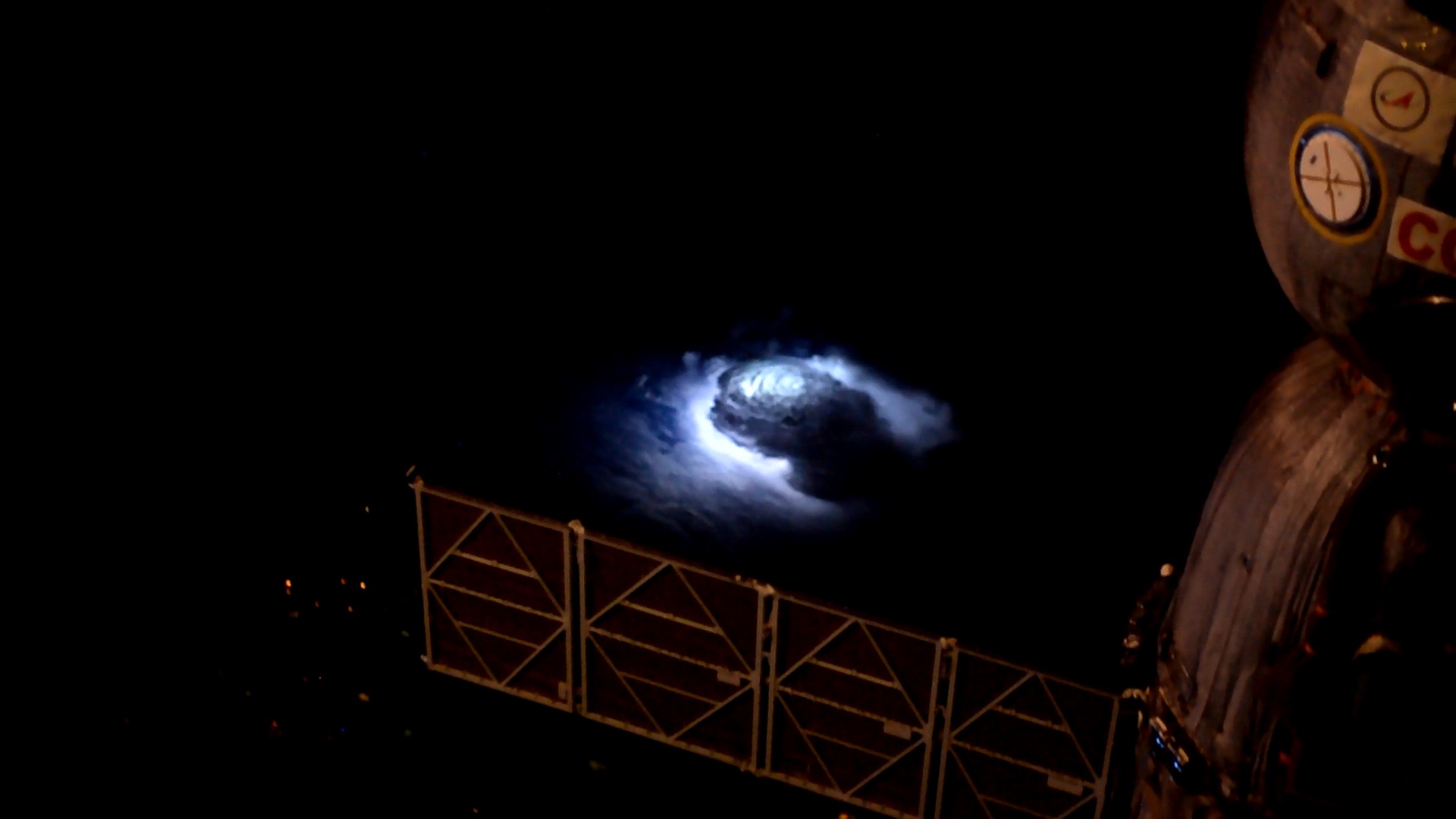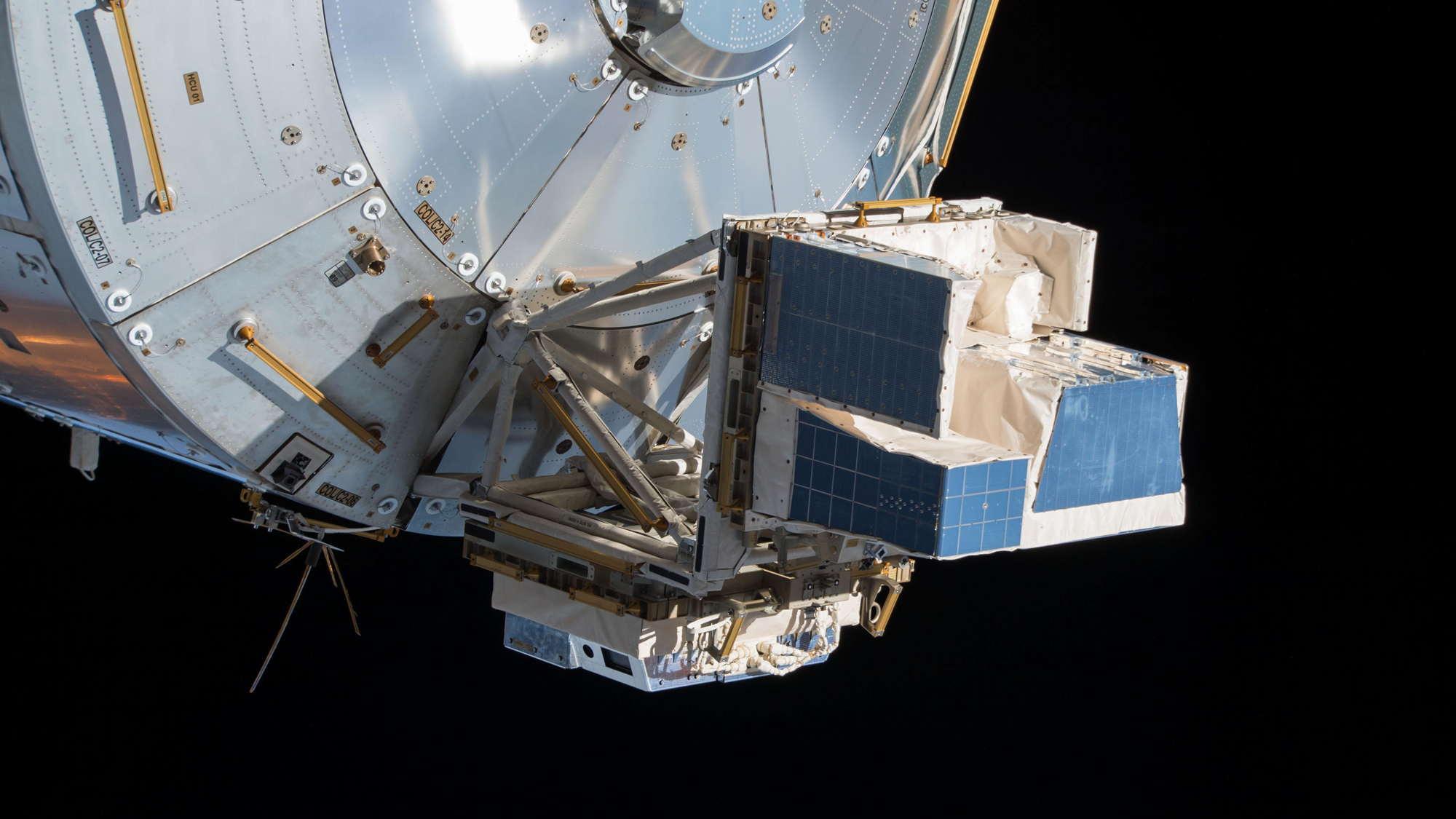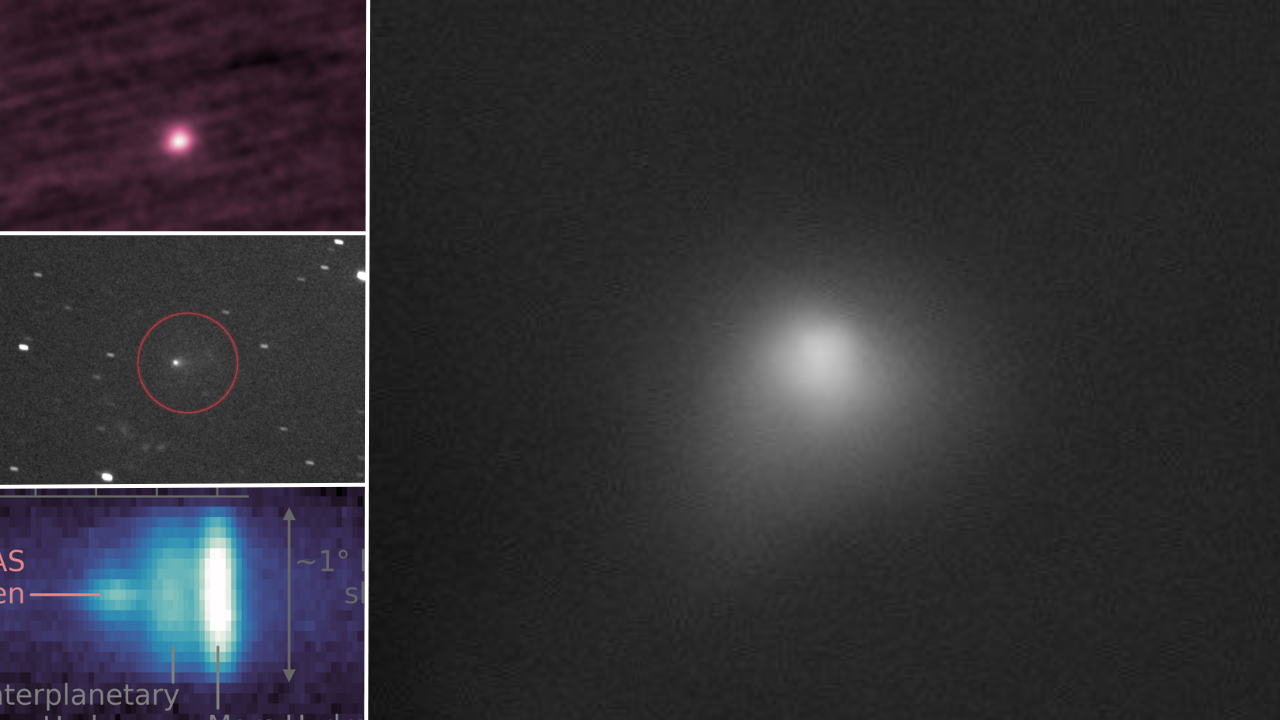'Elves' and 'blue jet' lightning in Earth's stratosphere spotted from space
The space station detected several "elves" and a "blue jet" in a thunderstorm over the Pacific Ocean.
Newly published observations from space are showing researchers more about the nature of Earth's lightning storms, including whimsically named phenomena such as "blue jets" and "elves."
The International Space Station's Atmosphere-Space Interactions Monitor (ASIM) observatory caught a single blue "jet" (upward-shooting lightning) from a thunderstorm cell, along with four "elves," or optical and ultraviolet emissions from the bottom of the ionosphere, according to a Nature paper published Wednesday (Jan. 20).
ASIM, a European instrument, can peer down at lightning from space. Its unique perch allows researchers to chase down elusive lightning phenomena that remain poorly understood after decades of research, mostly from ground observations.
Video: See an 'elve' and 'blue jet' from space in this animation
Related: NASA's Juno spacecraft spots 'sprites' and 'elves' dancing in Jupiter's atmosphere
Understanding the origins of lightning also could provide insight into how greenhouse gases are concentrated in Earth's atmosphere, the European Space Agency (ESA) said in a statement.
"These bizarre-sounding [phenomena] are very difficult to observe from the surface of the Earth," ESA stated in the statement, about lightning's various forms. "Looking down on Earth's weather from the International Space Station 400 km [250 miles] above," the agency added, "ASIM's enhanced perspective is shedding new light on weather phenomena and their characteristics."
ASIM includes a bundle of instruments such as photometers (which measure light intensity), optical cameras, and an X-ray and gamma-ray detector. ASIM was delivered to and installed on the space station in 2018 to seek electrical discharges during Earth's storms.
Breaking space news, the latest updates on rocket launches, skywatching events and more!
Incredible Earth: $22.99 at Magazines Direct
The planet we live on is a remarkable place. But have you ever wondered how or why these things occur? How the Earth was made? How we predict the weather? How fossils form? What causes earthquakes or which animals glow in the dark? "Incredible Earth" reveals answers to these questions and more on a thrilling journey through everything you need to know about our world — and with gorgeous photography and insightful diagrams along the way!
This latest bout of research generated a cover-page story in Nature along with the scientific paper, but it only represents a portion of ASIM's scientific output. In 2019, a Science paper based on ASIM results explored terrestrial gamma-ray flashes (TGFs) that occur when the strong electrical field associated with thunderstorms stimulates particles in the atmosphere; these particles then emit radiation. The 2019 study was also the first to suggest that lightning triggers TGFs and elves.
More recently published papers from 2020 include comparing observations of the same lightning flash in Columbia from space and the ground, and a three-year summary of ASIM research describing applications in weather forecasting and public safety, among other data.
A full list of papers based on the instrument's data is available at the ASIM Science Data Centre.
Follow Elizabeth Howell on Twitter @howellspace. Follow us on Twitter @Spacedotcom and on Facebook.

Elizabeth Howell (she/her), Ph.D., was a staff writer in the spaceflight channel between 2022 and 2024 specializing in Canadian space news. She was contributing writer for Space.com for 10 years from 2012 to 2024. Elizabeth's reporting includes multiple exclusives with the White House, leading world coverage about a lost-and-found space tomato on the International Space Station, witnessing five human spaceflight launches on two continents, flying parabolic, working inside a spacesuit, and participating in a simulated Mars mission. Her latest book, "Why Am I Taller?" (ECW Press, 2022) is co-written with astronaut Dave Williams.



